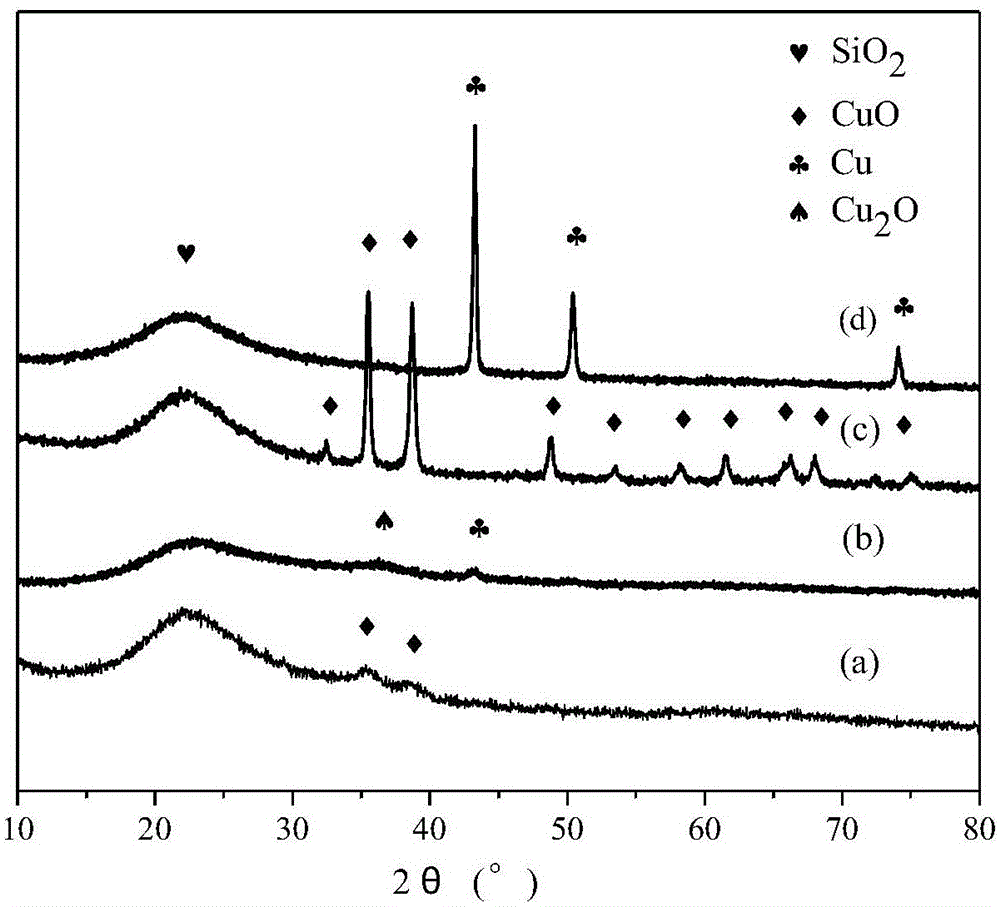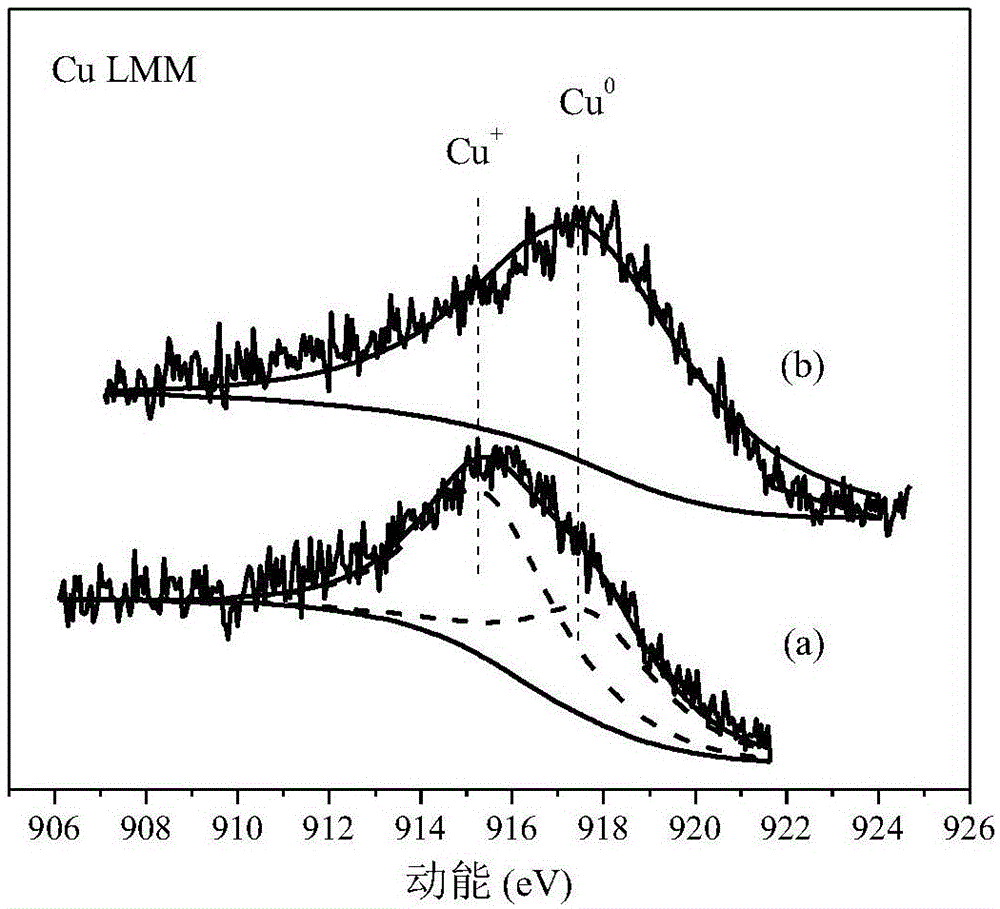Cu/SiO2 catalyst and method therefor for synthesizing tetrahydrofuran
A catalyst and hydrogen technology, applied in the direction of organic chemistry, can solve the problems of low dispersion of active components and low hydrogenation activity, and achieve the effects of cheap raw materials, improved activity, and environmental friendliness
- Summary
- Abstract
- Description
- Claims
- Application Information
AI Technical Summary
Problems solved by technology
Method used
Image
Examples
Embodiment 1
[0041] Weigh 2.94gCu(NO 3 ) 2 , dissolved in 40ml of deionized water, stirred at room temperature for 10min, until it was completely dissolved, added 10ml of ammonia water (28wt%) to make cuproammonia solution, stirred for 40min, added 1g of polyethylene glycol, continued to stir for 60min, and controlled the solution temperature is 40°C. Then add 4gSiO 2 , with a specific surface area of 150m 2 g -1 , the average pore size is 8nm, and the particle size is 30 mesh. Stirring was continued for 300 min, then the temperature was raised to 90 °C to remove the solvent to obtain a gummy solid. The colloidal solid was calcined at 450°C for 6 hours to obtain 2 The copper oxide precursor on the carrier, its XRD pattern is as follows figure 1 (a) curve; then in a hydrogen atmosphere, at 250 ° C temperature conditions for 12 hours to obtain 25wt% Cu / SiO 2 Catalyst, its XRD pattern is as follows figure 1 The (b) curve, AES figure see figure 2 (a) curve.
[0042] figure 1 It ...
Embodiment 2
[0045] Weigh 2.28gCu(CH 3 COO) 2 , dissolved in 20ml of deionized water, stirred at room temperature for 50min, until it was completely dissolved, added 5ml of ammonia water (25wt%) to make cuproammonia solution, stirred for 60min, added 1g of polyethylene glycol, continued to stir for 80min, and controlled the solution temperature is 30°C. Then add 4gSiO 2 , with a specific surface area of 200m 2 g -1 , the average pore size is 6nm, and the particle size is 40 mesh. Stirring was continued for 200 min, then the temperature was raised to 100°C to remove the solvent to obtain a gummy solid. The colloidal solid was calcined at 400°C for 8 hours to obtain 2 The copper oxide precursor on the carrier; then in a hydrogen atmosphere, it was reduced for 6 hours at a temperature of 300°C to obtain 20wt% Cu / SiO 2 catalyst.
Embodiment 3
[0047] Weigh 2.89gCu(HCOO) 2 , dissolved in 15ml of deionized water, stirred at room temperature for 15min, until it was completely dissolved, added 10ml of ammonia water (24wt%) to make cuproammonia solution, stirred for 100min, added 1.5g of polyethylene glycol, continued to stir for 80min, and controlled the solution The temperature is 35°C. Then add 4gSiO 2 , with a specific surface area of 300m 2 g -1 , the average pore size is 5nm, and the particle size is 20 mesh. Stirring was continued for 300 min, then the temperature was raised to 95 °C to remove the solvent to obtain a gummy solid. The colloidal solid was calcined at 350°C for 10 hours to obtain 2 The copper oxide precursor on the carrier; then in a hydrogen atmosphere, it was reduced for 4 hours at a temperature of 400°C to obtain 30wt% Cu / SiO 2 catalyst.
PUM
| Property | Measurement | Unit |
|---|---|---|
| Average pore size | aaaaa | aaaaa |
Abstract
Description
Claims
Application Information
 Login to View More
Login to View More - R&D
- Intellectual Property
- Life Sciences
- Materials
- Tech Scout
- Unparalleled Data Quality
- Higher Quality Content
- 60% Fewer Hallucinations
Browse by: Latest US Patents, China's latest patents, Technical Efficacy Thesaurus, Application Domain, Technology Topic, Popular Technical Reports.
© 2025 PatSnap. All rights reserved.Legal|Privacy policy|Modern Slavery Act Transparency Statement|Sitemap|About US| Contact US: help@patsnap.com


